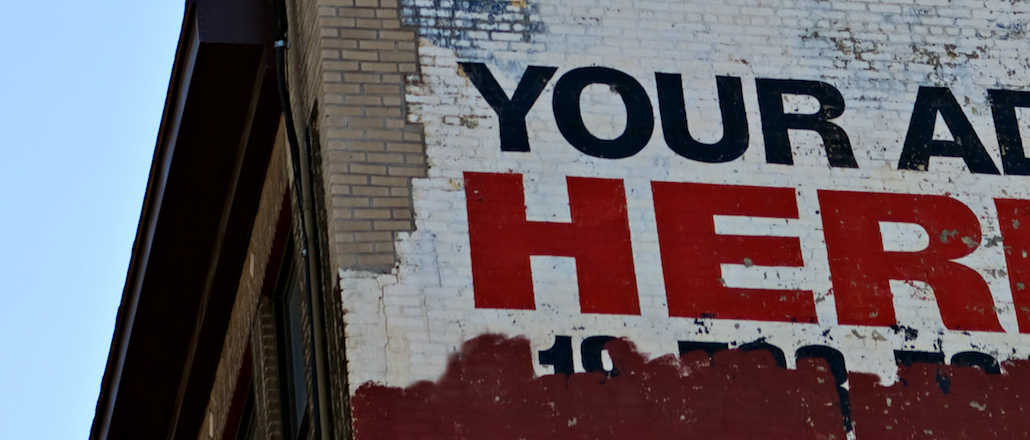
Mark Duffy has written the Copyranter blog for 10 years and is a freelancing copywriter with 20-plus years of experience. His hockey wrist shot is better than yours. Follow him on Twitter.
Native advertising doesn’t sell for brands. It does little for consumers looking to make a product choice. And it continues to compromise editorial content.
Last week, BuzzFeed struggled with its daily feed mix of fluff, news and native ads. Gawker reported that it had deleted two posts within 24 hours of being published: one critical of Dove’s “Real Beauty” campaign and a second titled “Why Monopoly Is The Worst Game In The World.” Unilever (parent of Dove) is one of BuzzFeed’s biggest advertisers. In early March, Hasbro launched a campaign on BuzzFeed to celebrate Monopoly’s 80th anniversary. Then, contradicting a peppy editorial memo about why the Dove post was deleted, BuzzFeed editor-in-chief Ben Smith reinstated it and the Monopoly post, and claimed they were not initially deleted because of “advertiser pressure.”
Sure. Maybe it wasn’t because of direct advertiser pressure, but I’d bet the farm and all the animals on it that advertisers and their money were a factor. I have experience with BuzzFeed — I worked there, have deleted Unilever posts under advertiser pressure, and was fired — so I know how it works.
Everybody in the industry knows that BuzzFeed’s native ads are better intermingled than at most, if not all, other social media news sites. The ads sit very pretty — and deviously — among the real news posts, the main reason advertisers love the site.
Brands love to buy native advertising on popular news websites because it makes them look like not advertisers but part of the website, “part of the conversation.” Every organization involved is trying its God darnedest to not even call it the “A” word. Native advertising has even influenced the style of more traditional advertising. See: the aforementioned Dove campaign where the brand has bluntly, repeatedly crammed itself into a woman’s internal conversation about self-worth, a tactic that has apparently sold a lot of soap. But has it dirtied the brand, long-term? Check those numbers five years from now.
What nobody, including BuzzFeed, has been able to prove yet is whether native advertising sells one bit of product. I’ve argued no in the past. But is native advertising a good thing for news websites? Of course! It generates big money for BuzzFeed, Huffington Post and even legacy news sites such as The New York Times and The Wall Street Journal. But how is it affecting the news brands of these sites?
Do they even care? They obviously don’t give much of a shit about whether the ads sell any product or not. Fifteen years ago, news sites were as good as dead according to many top media critics. Native advertising has saved the news, for now, but how much is it sullying the news?
Speaking of sully, journalist Andrew Sullivan has been an outspoken pissed-off opponent of native ads: “At one point, the reputation of that journalism is going to be tarnished by the fact that you’re not sure if it’s done out of a commercial interest. … It will collapse when the readers figure it out.”
Yes, the news sites’ readers will determine the success or failure of native ads. But hasn’t this generation already figured out that brands have all the “hand” in this relationship and that brand hand strength is only going to increase? Do they think brands are going to stop requesting news posts be pulled? Maybe millennials just don’t care either, about news integrity and ethics, or about brand power. The planet’s got much bigger problems; I don’t blame them at all.
I know that some employees at BuzzFeed have “crossed the aisle” in recent years between the editorial and ad creative departments, in both directions, with very little internal fanfare, sometimes twice. I was asked to work on both at the same time while I was there, which I did a couple times — no biggie these days. More and more, news sites are asking their journalists to also write native ads. This is not a new thing, but it’s ubiquity.
(Editor’s note: When contacted, BuzzFeed acknowledged that employees have in a few instances moved between sponsor content and editorial divisions. It also could confirm that on at least one occasion Duffy was asked to assist on sponsor content but that it was in violation of its standards.)
Here’s what’s going to happen at BuzzFeed and elsewhere, especially now: Many posts that are in any way critical of a brand — sponsor or not — will be killed before you see them. And you’re going to see more and more unsponsored brand fluff pieces posing as “news” posts.
News and ads, living and sleeping together, perfectly mimicking each other — it’s a beautiful, seamless relationship, ain’t it?
More in Media

From sidelines to spotlight: Esports events are putting creators center stage
Esports events’ embrace of content creators reflects advertisers’ changing priorities across both gaming and the wider culture. In the past, marketers viewed esports as one of the best ways to reach gamers. In 2025, brands are instead prioritizing creators in their outreach to audiences across demographics and interest areas, including gaming.

Condé Nast and Hearst strike Amazon AI licensing deals for Rufus
Condé Nast and Hearst have joined the New York Times in signing a licensing deal with Amazon for its AI-powered shopping assistant Rufus.

Media Briefing: AI payouts may be entering a new era
AI compensation is evolving — and new models, not just publisher demands, are driving the shift beyond flat-fee licensing.





